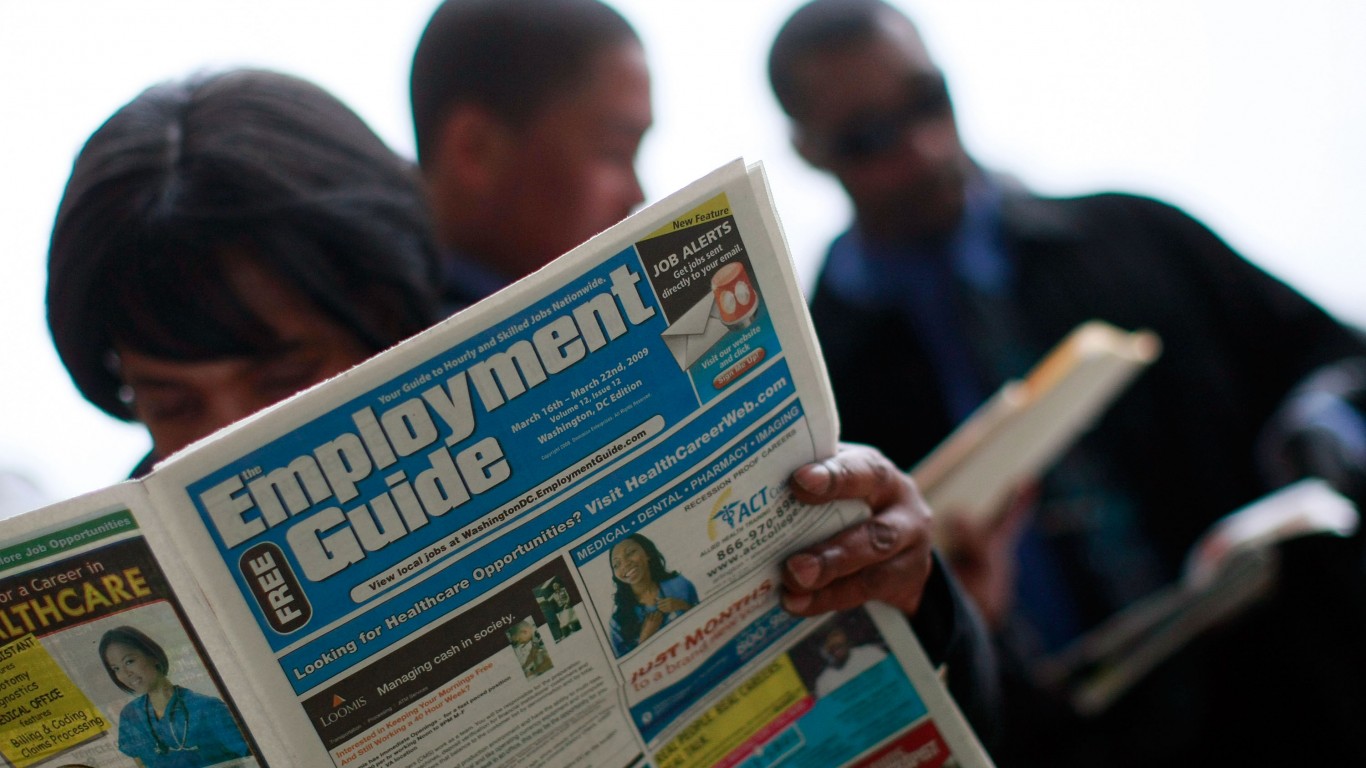
The unemployment rate among black Americans was 8.1% in March, well above the national rate of 4.5%. Of the 4.97 million unemployed Americans, 1.6 million were black, which is 32%.
The unemployment rate among white Americans in March was 4.0%. Among Asia Americans the figure was 3.2%.
The Bureau of Labor Statistics summary of the March situation overall:
The unemployment rate declined to 4.5 percent in March, and total nonfarm payroll employment edged up by 98,000, the U.S. Bureau of Labor Statistics reported today. Employment increased in professional and business services and in mining, while retail trade lost jobs.
Household Survey Data
The unemployment rate decreased by 0.2 percentage point to 4.5 percent in March, and the number of unemployed persons declined by 326,000 to 7.2 million. Both measures were down over the year.
Among the major worker groups, the unemployment rates for adult women (4.0 percent), Whites (3.9 percent), and Hispanics (5.1 percent) declined in March. The jobless rates for adult men (4.3 percent), teenagers (13.7 percent), Blacks (8.0 percent), and Asians (3.3 percent) showed little or no change.
In March, the number of persons unemployed less than 5 weeks declined by 232,000 to 2.3 million. The number of long-term unemployed (those jobless for 27 weeks or more) was little changed over the month at 1.7 million and accounted for 23.3 percent of the unemployed. Over the past 12 months, the number of long-term unemployed was down by 526,000.
The labor force participation rate remained at 63.0 percent in March, and the employment-population ratio, at 60.1 percent, changed little. The employment-population ratio has edged up over the year, while the labor force participation rate has shown no clear trend.
The number of persons employed part time for economic reasons (sometimes referred to as involuntary part-time workers), at 5.6 million, was little changed in March but was down by 567,000 over the year. These individuals, who would have preferred full-time employment, were working part time because their hours had been cut back or because they were unable to find full-time jobs.
In March, 1.6 million persons were marginally attached to the labor force, little changed from a year earlier. (The data are not seasonally adjusted.) These individuals were not in the labor force, wanted and were available for work, and had looked for a job sometime in the prior 12 months. They were not counted as unemployed because they had not searched for work in the 4 weeks preceding the survey.
Among the marginally attached, there were 460,000 discouraged workers in March, down by 125,000 from a year earlier. (The data are not seasonally adjusted.) Discouraged workers are persons not currently looking for work because they believe no jobs are available for them. The remaining 1.1 million persons marginally attached to the labor force in March had not searched for work for reasons such as school attendance or family responsibilities.
Get Ready To Retire (Sponsored)
Start by taking a quick retirement quiz from SmartAsset that will match you with up to 3 financial advisors that serve your area and beyond in 5 minutes, or less.
Each advisor has been vetted by SmartAsset and is held to a fiduciary standard to act in your best interests.
Here’s how it works:
1. Answer SmartAsset advisor match quiz
2. Review your pre-screened matches at your leisure. Check out the advisors’ profiles.
3. Speak with advisors at no cost to you. Have an introductory call on the phone or introduction in person and choose whom to work with in the future
Get started right here.
Thank you for reading! Have some feedback for us?
Contact the 24/7 Wall St. editorial team.


